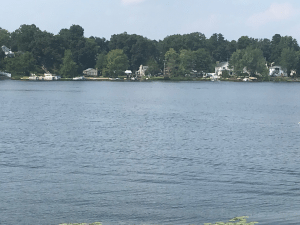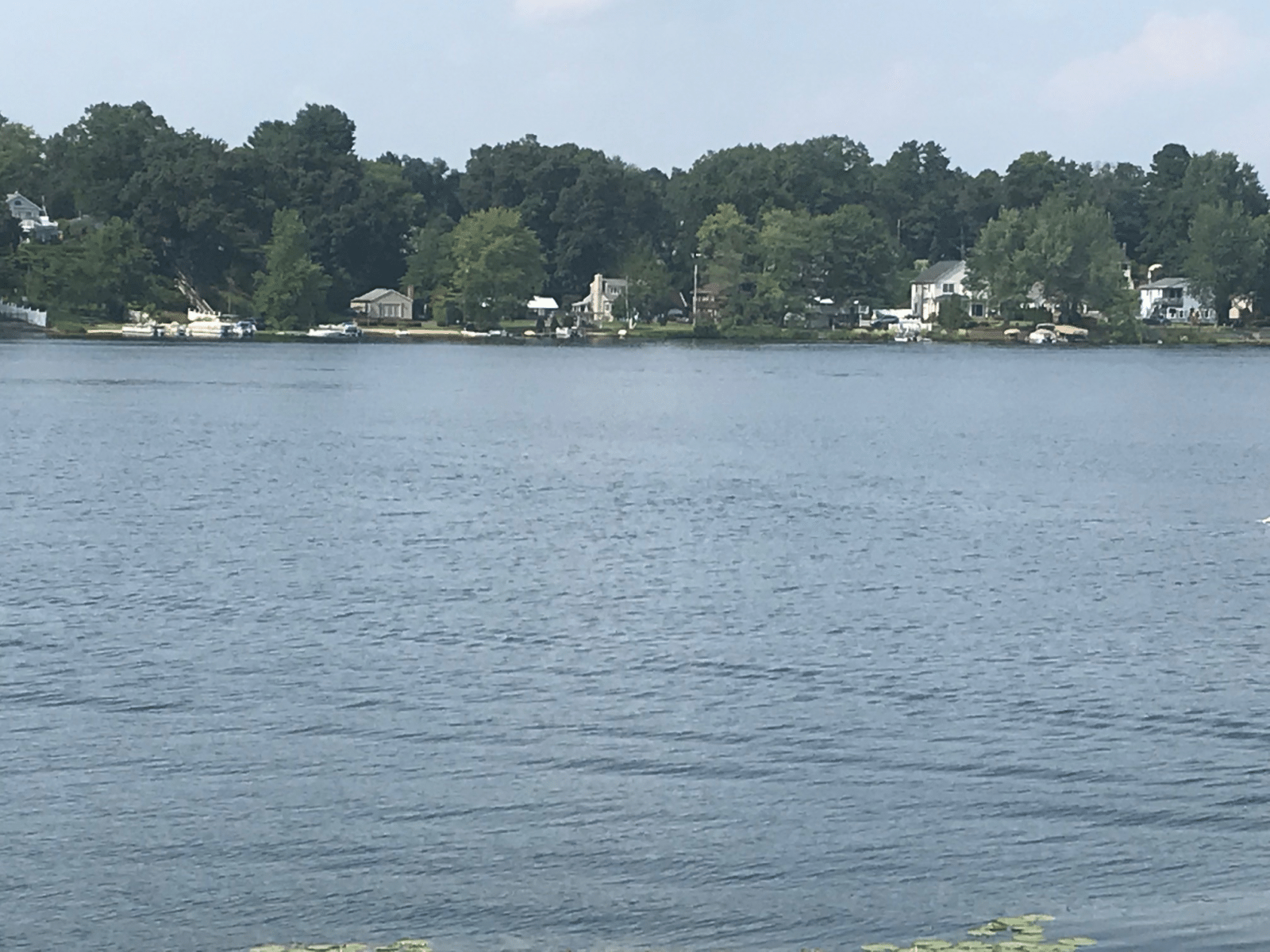SOUTHWICK – Algae bloom testing was conducted on Congamond Lake on Wednesday. Solitude Lake Management, who performs lake testing for the Town of Southwick, tested algae bloom after the Southwick Lake Management Committee discovered algae bloom on the southern part of Middle Pond on August 10.
The testing took place on Wednesday and Middle Pond was re-opened Thursday to the public.
Lake Management Committee Chairman Dick Grannells added that the algae bloom is close to a culvert right near the Saunders Marina.

The testing of the algae bloom took place on the southern part of Middle Pond on Congamond Lake. (Photo by Greg Fitzpatrick)
A blue and green slime, algae bloom forms when there is too much phosphorus at the bottom of a lake. A type of bacteria, algae bloom can sometimes transform into a toxic bacteria that would cause skin allergies to any person that may come in contact with it.
According to Eric Mueller of the Lake Management Committee, it all depends on the exact kind of algae bloom that is found in the body of water. In this case on Middle Pond, Solitude found that it was Cyano algae bloom. In accordance with the Massachusetts Department of Environmental Protection, Cyano found in bodies of water that are tested at counts over 70,000, are not allowed to be treated.
Mueller noted that the counts for this particular algae bloom were not over 70,000 and certainly within the treatable range. The exact count is not able to be given out at this time. Mueller wanted to make the public aware that it’s never a given when a toxic type of bacteria could affect you, as it could have an effect at any time, or have no effect at all.
“You can come in contact with the same algae yesterday and today, and today have no reaction to it, and tomorrow you can,” said Mueller.
In an effort to conduct more alum treatment for algae bloom testing on Congamond Lake for the future, the town of Southwick has requested a minimum of $1 million from the state, which would be a part of Gov. Charlie Baker’s Environmental Bond Bill and was signed by Baker last week.
Humason acknowledged that he put money in the Environmental Bond Bill for a dredger that would be used for Congamond Lake. The Town of Southwick is expected to use part of that $1 million or more for the alum treatment.
Regarded as a significant amount of funding, Grannells said that the alum treatment would help prevent phosphorous from forming in Congamond Lake, which is considered the main cause of algae bloom. A non-toxic material that can help clarify drinking water, alum treatment can prevent phosphorous from being released from the sediments at the bottom of the lake. Algae bloom is known to be decreased once phosphorus is reduced.






